What were toys and games from the past like?
Toys and games have changed and evolved since the 1950s. Boys have always played with toy cars and trains, and girls with dolls. However, technology and the influence of film and TV have made toys from each decade distinctive. Since childhood is only a brief period, manufacturers were easily able to change the look of toys creating one new fad as soon as an old one finished.
The 50s
The 50s were an era of innovation in toys, just as much as in other fields. However, traditional roles were still re-enforced. Girls played at homemaking, whilst boys played with toy guns.
Traditional boys toys like Meccano and Dinky cars were still firm favourites, but they were joined by new rivals Matchbox, Corgi and Spot-On (made by Tri-ang).
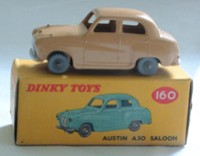
Some toymakers brought model cars to life; miniature car racing games became popular in the 50s. However, when Fred Francis gave his already popular Scalex cars an electric motor and a track with a groove instead of a rail, the definitive slot racing game Scalectrix was born.
Meccano had a foreign rival. A Danish carpenter called Ole Kirk Christiansen started selling a construction toy called 'Automatic Binding Bricks' in 1949. He later changed the name to Lego.
Dolls and dolls' houses were still firm favourites with girls. They also had play washing lines and toy cups and saucers. Young children of both sexes liked teddy bears, which continued to be popular since their introduction in the early 1900s.
Topics popular on television and the cinema influenced play in the 50s. Popular children's TV programmes such as the Flower Pot Men and Muffin the Mule spawned toy replicas and the best selling toy of 1954 was Sooty's Xylophone.
Anything from the Wild West, from cap guns to Cowboy and Indian outfits, was popular . Science fiction also influenced toys, introducing children to a world of ray guns and robots. With a constant diet of War films on the cinema and TV, the Second World War was also a popular theme.
Football was just as popular with 50s boys as it is today. They could enjoy playing soccer indoors when the classic football game Subbuteo was first marketed in 1947.
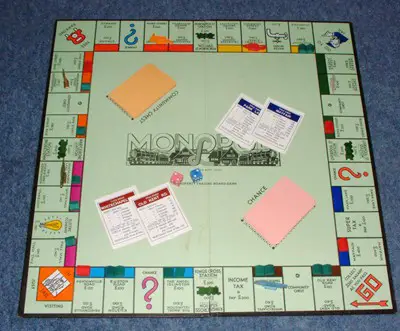
Board games were popular in the 50s in spite of the growing popularity of television. The American classic property trading game, Monopoly came to Britain in 1936 and an economy version was made during the War. It was still a top seller in the 50s and updated with new counters, one of which was a Rover 75.
Monopoly was joined by some new classic games in the post-war era. Scrabble was launched in 1948 and Cluedo in 1949.
The game Careers was first sold in 1957. Whilst Monopoly had the objective of amassing as much cash as possible and bankrupting your opponents (although its origins were in demonstrating the evils of speculation) Careers took a more balanced view of life, with the players having to choose their own goals - a combination of wealth, happiness and fame.
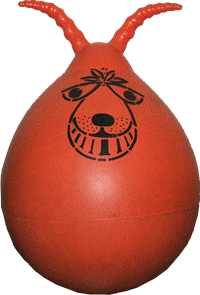
The 60s
Playtime in the 60s was about innovation and tradition. Whilst traditional roles remained with girls doing pretend housework and boys still playing soldiers, science fiction gave way to the real space race and the inventiveness and freedom of the 60s brought new ways for children to play.
The 60s gave us Twister (1966), a game which the players (children or adult) contorted themselves into unthinkable positions and could finish head to backside with their friends. The Space Hopper first bounced onto the scene in 1968. Its bright orange colour was typical of the end of the 60s and the cartoon style face is full of fun. Was it meant to be kangaroo? Or was it influenced by the space race?
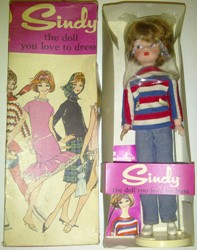
The 60s was also a decade for new dolls. The American invader Barbie launched in the late 50s, but Britain's own version Sindy arrived in the shops in 1963.
For years toymakers thought that boys would not play with dolls, but were proved wrong in the 60s by the sufficiently tough looking soldier called Action Man, which was based on an American toy called GI Joe.
The world of secret agents and spies came to the big screen in the 60s with James Bond. Corgi Toys were quick to cash in with a model of Bond's Aston Martin DB5 with a working ejector seat. Corgi introduced a number of cars based on film and TV and overtook Dinky in the toy car industry.
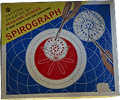
New ideas in design and technology influenced toys and games in the 60s. Two drawing toys which were originally intended for use in the adult world became classic toys. Etch-A-Sketch allowed children to produce detailed blue print-like drawings and shake the toy to rub them out and start again. The original Spirograph caused a sensation when it was launched in 1965. As well as winning Toy of the Year for 1967, its geometric patterns inspired fashion design in the 60s.
For younger children, part-time designer and teacher at the Hornsey College of Art, Patrick Rylands, devised Playplax. It was a construction toy made from transparent coloured shapes.
Times were changing in the world of toy cars. Mattel's new Hot Wheels brought fast moving toy cars as well as the style of Californian hot rods to British children in 1968. The Raleigh Chopper bike brought American hot rod style to UK children on a bigger scale in 1969.
The 70s
The Space Hopper, the Raleigh Chopper and Mattel's model cars with Hot Wheels made their debut in the 60s, but in the 70s achieved their highest popularity.
The Chopper was revised with safety improvements to become the Mark 2 in 1972. Mattel did not have their own way for long with Hot Wheels. British rival Matchbox had already introduced Superfast Wheels in 1969 and converted their whole range to them in the early 70s.
Sindy continued to be a popular toy for girls and won Toy of the Year in 1970. That accolade also went to another doll in 1971, Katie KopyKat; Katie copied everything you wrote.
Another 70s' craze that had its origins in the 60s was Klackers, or Clackers: two acrylic balls that were made to click together. Experts could make them clack at the bottom and top in a circular movement, but safety concerns saw their early demise.

The Mastermind TV programme hosted by Magnús Magnússon had huge audiences in the 70s. However, the Mastermind Board Game made by Invicta in 1973 had no connection with the Mastermind TV show. It was all about breaking a secret code.
Lego was as popular as ever. It scooped Toy of the Year in 1974 and 1975. Other toys with their origins in the 50s and earlier were discovered by new generations of children. The football game Subbuteo gained plastic figures in 1967 and in the 70s was available in up to fifty different team strips. There were spin-off cricket and snooker games too. Scalextric was improved with new cars in the 70s and was as popular as ever. More traditional toys such as Hornby trains and Meccano continued to find a market.

The big change in play in the 70s though was the advent of electronic games. The 70s gave us digital watches and pocket calculators and by the middle of the decade electronic toys and games as well. One of the first to capture the imagination of the UK public was Adman Grandstand, which could play a variety of sports, including a version of the Pong arcade game. The brightly coloured MB Simon game was also a big seller in 1978.
Star Wars was in the cinema in 1977 and a host of Star Wars inspired merchandise followed. Never before had the movie makers cashed in so much on the toy market, it was a portent for the new decade.
The 80s
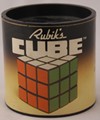
The 80s began with a puzzle from Eastern Europe. The Rubik's Cube craze sweep the country in 1980 and 1981. Hungarian mathematician, Erno Rubik, invented the Cube and Ideal Toys brought it to the UK in 1980. The Rubik's Cube craze quickly spread through school playgrounds in the early 80s and kids learned how to solve the puzzle by word of mouth.
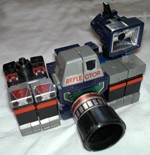

The popularity of Star Wars toys continued as two new movies came out, 'The Empire Strikes Back' in 1980 and 'Return of the Jedi' in 1983. Mattel did it the other way round with Masters of the Universe. They brought out a series of action figures based around a He-man character and a movie followed in 1987.
The big Sci-Fi toys of the 80s were the Transformers. Nothing to do with model railway sets, as I first believed, but a series of robots, cars, trucks and even household gadgets that could transform into something else.
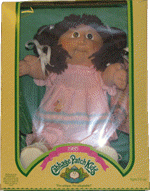
The 80s was also the decade of the home computer. Sir Clive Sinclair's ZX80 pointed the way and many a budding programmer cut their teeth on a ZX81, Spectrum or BBC Micro.
At the other end of the scale cute toys brought in big bucks. My Little Pony first appeared in 1981 and continued to charm little girls and some older ones until 1991. Cute sold us the Cabbage Patch Kids too. Each doll came with its own 'Adoption Certificate'. The craze swept America in the early 80s and quickly spread to the UK. The decade ended with Sylvanian Families, a collection of toy rabbits, beavers, hedgehogs, mice, bears and other woodland creatures. They came in families and had their own houses.
A taste of the future was in the shops for Christmas 1989. The Nintendo Gameboy was as pocket sized as a mobile phone from the 80s. It could play a variety of different games loaded from a cartridge. It came with the wall building Tetris game, which was curiously addictive.
Author: Steven Braggs, 2012
Your comments on toys and games from the past
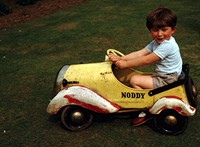
"I am from India we used to play the games that are lost in time and many youngsters don't even remember today" Peter Kumar
"I still have my chopper bicycle in our garage whenever I take it out for a ride I pretty much get people stopping me and making me an offer." Surur Allie
"I am from Indonesia. 'ini pertama kali saya melihat mainan tahun 1970, saya ingin memiliki salah satunya'" Nanda Kurniawan
Google translate: This is the first time I see the toys in 1970, I want to have one
"hallo...if I have a time machine, I want to have one" Nanda Kurniawan
"I am 62 years of age this year. I was born in 1947. I will do my best to remember the early parts (13-15years). I think the games of playing cowboys and indians was finished at this stage. I think i still had my collection of dinkys (cars), and possibly a collection of cowboys and indians, that i would have bought in Woolworths. Also records were a big part of my collections (45's and lp's). I used to get a lot of my 45's in my local chipper. These i got when they were updating to what was new in the charts. These had the centre piece taken out so that they could play in the jukebox. I had a few centre pieces to suit so that i could play them on my record player.
I also used to buy a girls magazine called 'Valentine' the reason for this was they used to have transfers that you could iron onto your shirt, these were pictures of people like Elvis, Cliff Richard, etc.
I do not want to waffle on, so i hope this will be of interest to someone. If you want to contact me and ask me things that i did or remember from the early days just e-mail me. regards, " Des Burke
"The outdoor games we used to play- two ball on the wall, hare and hounds (involved either a paper or chalk chase), British bulldog, kick the can, Crackners (two plastic balls that you hit above and below your hand) A tennis ball in your mum's old tights ( looped around your ankle and jumped over with your other leg) Elastics (with two other friends holding the elastic open between their legs) Cats cradle, Hopscotch, skipping, the big ship sails on the ally ally ooh ( line game) hand clapping games, rounders, kiss the girl, kiss the boy, Swinging on a tyre on a tree.......what a great time we could have with next to nothing :)" Mo
"Im 9 and im trying to find out about toys from 50 years ago does anyone have any suggestions????" Bethany Dunion
"Does anyone remember Trik Trak, a battery car toy." Sean
"What about the construction toys? Besides Meccano (in original read and green colours) Lego was around (but I remember when wheels were introduced) and there were MiniBricks and Bayko, where plastic walls were built on a frame of metal wires. Those were my favourites." Les
"Barbie doll in the 60's her cousin Francie with real eyelashes (my favourite) Tuttie and Todd, Skipper and scooter etc, Sindy dolls, Comics - Twinkle for younger ones, Bunty with the cut out dolls on the back (hours of fun), Judy, Jackie, Beano, hotspur, I loved cutting out figures from catalogues - could play with them for hours. Lego hours of fun making dolls houses when we could not afford one. Tiny tears dolls, (floppy dolls) gonks from the sixties - loads of teenagers made them (they look like humpty dumpty with beatles style hair and long legs/arms. So much fun. In the 70's cats cradle, elastic skipping, playing two ball on the wall and marbles all popular. We still played cops and robbers and cowboys and indians - very much outdoor play as no computers. Making dens in the fields or wherever. Kisschase. Postmans knock." jackie
"Does anyone remember the game 'Froggy in the Mill Pond' and how to play?" Cathy Smith
"I have a game of Careers, found it in a charity shop a few years ago......very entertaining" Tracy
"does any one remember magic robot, a army figure with magnets that answers questions etc, weird, my dad (46yrs) used to have it and me and my brother used to play with it too over 25 years later!! fab, i love the 60's it makes me soooo nostalgic.xxx" Sally Cinnamon
"Sean, i remember Trik Trak I had a set just found set on e bay I can remember the car would go on floor and everyso often go on track to keep straight or go round a ben. Richard age 47 1/2 (Still also riding a chopper and a Grifter !)" Richard Seymour
"toys from in the past look so fun to play with." Samantha


Comments